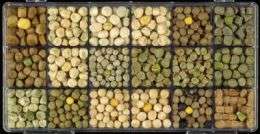Sowing a future for peas

New research from the John Innes Centre and the Central Science Laboratory could help breeders to develop pea varieties able to withstand drought stress and climate change. The research also shows that the composition of crops is likely to change with the climate.
"While many compounds have been reported to change in laboratory based drought stress experiments, few have identified how such compounds change in crops under field conditions," says Dr Claire Domoney of the John Innes Centre.
The researchers used NMR spectroscopy to produce a profile of the levels of all the different small molecules or metabolites in pea plant leaves. This profile, known as the metabolome, was then compared with that from plants subjected to controlled drought stress. The study found several key plant metabolites increased under drought stress, some of which had not previously been shown to be involved.
Less water, especially at critical times in the growing season, means lower yield and quality. This new information could be used to identify varieties of pea and other pulse crops that are more tolerant to changes in water availability.
Source: Norwich BioScience Institutes















